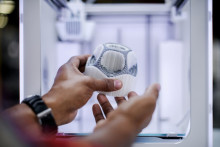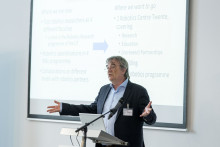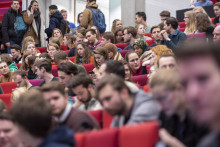‘It all began with a starting grant from MIRA to invest in the infrastructure,’ explains Prof. Bart Koopman, head of the Biomechanical Engineering department. He and other faculty members, such as lab Manager Quint Meinders, brain-stormed about an innovative plan and eventually the idea of a new rapid prototyping lab was born.
The lab is offered to a framework of projects within the faculty but can also be utilized by a broader range of UT members as a shared facility. The lab offers a variety of printing techniques on machines costing up to half a million euros. Actual print prices depend on size and material.
Faster and more complex 3D products
Moreover, the new rapid prototyping lab offers new possibilities for education, design and research. With regard to education, the local 3D print facilities give students the chance to try out different ways of printing with a better quality and better materials.
The lab allows users to create new 3D products faster and make them more complex, giving them the freedom to create whatever they like. New products are already being designed and made in the lab. ‘For example, the Green Team Twente uses our 3D printer to build components for their car,’ says Koopman.
Printed hand prosthesis
Finally, Koopman mentions the potential of the lab for research. ‘We have ambitions. One aim is to test whether new materials can be printed in combination with each other, for example composite materials. This material could be applied in e.g. rehabilitation technology.’
Currently a hand prosthesis is being developed at the lab. ‘The advantage is that the prosthesis comes out of the 3D printer as one piece including joints, which basically means that you do not need any connecting components like screws,’ explains Koopman, who also aims to test whether it is possible to print an artificial heart.







